Brinker International Bundle
Can Brinker International Continue to Sizzle in the Restaurant Industry?
Brinker International, the parent company of Chili's Grill & Bar and Maggiano's Little Italy, has a rich history rooted in casual dining. Founded in 1975, the company's journey from a single restaurant to a global presence showcases its adaptability. Understanding Brinker International's Brinker International SWOT Analysis is crucial for grasping its strategic positioning.
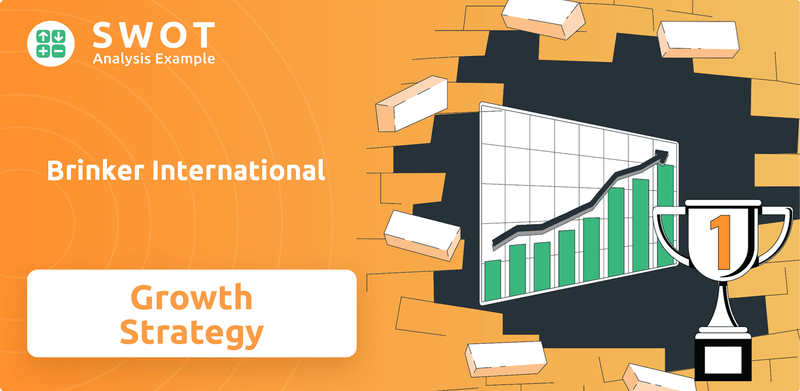
This exploration delves into the growth strategy and future prospects of Brinker International, a key player in the restaurant industry. We'll examine how the company plans to navigate the competitive landscape, focusing on its business strategy and expansion plans. Discover the strategic initiatives driving Brinker International's sustained success and its approach to the evolving market.
How Is Brinker International Expanding Its Reach?
Brinker International's growth strategy is primarily focused on expanding its existing brands, Chili's Grill & Bar and Maggiano's Little Italy. The company aims to increase its footprint and improve the performance of its current locations. This includes strategic development, leveraging off-premise businesses, and exploring international markets.
A key element of Brinker's expansion involves optimizing its restaurant portfolio through unit growth and enhancing the performance of existing locations. The company is also focusing on its off-premise business, which has seen significant growth, especially through virtual brands like It's Just Wings and Maggiano's Italian Classics. These virtual brands utilize existing kitchen infrastructure to generate additional revenue.
Domestically, Brinker is concentrating on strategic restaurant development, including new builds and remodels, to improve the customer experience. Internationally, the company is seeking franchise partners to expand Chili's, particularly in regions with strong growth potential for the casual dining sector. The company is also exploring avenues beyond traditional expansion, such as supply chain optimization to improve efficiency and cost-effectiveness.
Brinker International plans to expand domestically through new restaurant builds and remodels to enhance the customer experience. This strategy aims to increase foot traffic and improve the overall dining experience at its existing locations. The company is also investing in digital initiatives to improve online ordering and delivery services.
International expansion is a key part of Brinker's growth strategy, particularly for Chili's. The company is actively seeking franchise partners in new markets to extend its global footprint. This approach allows for faster expansion and reduces capital investment. The focus is on regions that offer strong growth opportunities.
Brinker is leveraging its off-premise business through virtual brands like It's Just Wings and Maggiano's Italian Classics. These brands use existing kitchen infrastructure to generate incremental revenue and reach new customer segments. The company plans to continue expanding its virtual brand presence and explore new concepts.
Optimizing the supply chain is another area of focus for Brinker. This involves improving efficiency and cost-effectiveness, which indirectly supports expansion by improving profitability and resource allocation. Efficient supply chain management is crucial for maintaining competitive pricing and ensuring consistent product quality.
Brinker International's strategic initiatives include a disciplined approach to capital allocation, ensuring that investments align with long-term growth objectives. The company is focused on delivering strong returns and enhancing shareholder value. The company is also investing in technology and digital transformation to improve the customer experience and operational efficiency.
- Focus on unit growth and improving existing locations.
- Leveraging off-premise business and virtual brands.
- Strategic restaurant development and international expansion.
- Optimizing the supply chain for efficiency and cost-effectiveness.
Brinker International SWOT Analysis
- Complete SWOT Breakdown
- Fully Customizable
- Editable in Excel & Word
- Professional Formatting
- Investor-Ready Format
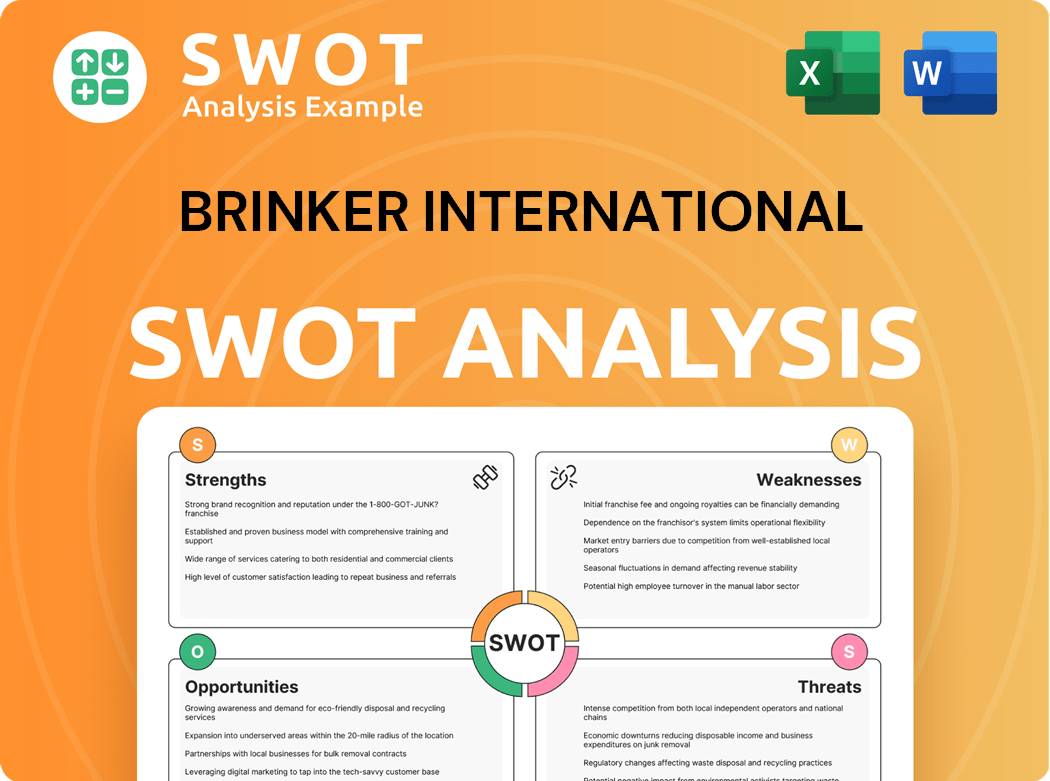
How Does Brinker International Invest in Innovation?
Brinker International is actively leveraging innovation and technology to fuel its growth strategy and improve the customer experience. The company is focused on digital transformation, particularly in enhancing its off-premise dining capabilities. This includes investments in online ordering platforms, mobile applications, and loyalty programs, all designed to streamline the customer journey and encourage repeat business.
These digital tools are especially crucial for the success of its virtual brands, such as It's Just Wings and Maggiano's Italian Classics, which heavily rely on online orders and delivery services. By focusing on technology, Brinker aims to meet the evolving demands of the restaurant industry and maintain a competitive edge. This approach is part of a broader business strategy aimed at driving long-term growth.
Brinker's commitment to innovation extends to data analytics and artificial intelligence (AI). The company uses these tools to gain deeper insights into customer preferences, optimize menu offerings, and improve operational efficiency. By analyzing customer data, Brinker can personalize marketing efforts and tailor promotions, leading to increased engagement and sales. Automation is also a key area of focus, particularly in kitchen operations and back-of-house processes, to improve speed of service and reduce labor costs.
Brinker International is investing heavily in digital platforms to enhance customer experience. This includes online ordering, mobile apps, and loyalty programs. These digital tools are critical for virtual brands like It's Just Wings.
The company uses data analytics and AI to understand customer preferences. This data helps optimize menus and personalize marketing. AI is also used to improve operational efficiency.
Brinker is automating kitchen and back-of-house processes. This automation aims to increase speed of service. It also helps reduce labor costs.
Brinker is evaluating its environmental impact. The company is implementing practices to reduce waste. They also focus on conserving resources.
The company is working to improve customer experience. This includes online ordering and loyalty programs. These efforts aim to increase customer satisfaction.
Virtual brands like It's Just Wings are a key part of the strategy. These brands rely on digital platforms. The digital platforms are essential for their success.
Brinker International's approach to technology and innovation is multifaceted, encompassing digital transformation, data analytics, and operational efficiency. The company's focus on these areas is crucial for its future prospects. The company's commitment to innovation is evident in its ongoing investments in digital infrastructure and operational technologies, which are designed to meet evolving consumer demands in the casual dining landscape. For a deeper understanding of the company's history, consider reading Brief History of Brinker International.
- Digital Platforms: Investments in online ordering, mobile apps, and loyalty programs.
- Data Analytics: Utilizing data to understand customer preferences and personalize marketing.
- Automation: Implementation of automation in kitchen and back-of-house operations.
- Sustainability: Initiatives focused on reducing waste and conserving resources.
Brinker International PESTLE Analysis
- Covers All 6 PESTLE Categories
- No Research Needed – Save Hours of Work
- Built by Experts, Trusted by Consultants
- Instant Download, Ready to Use
- 100% Editable, Fully Customizable
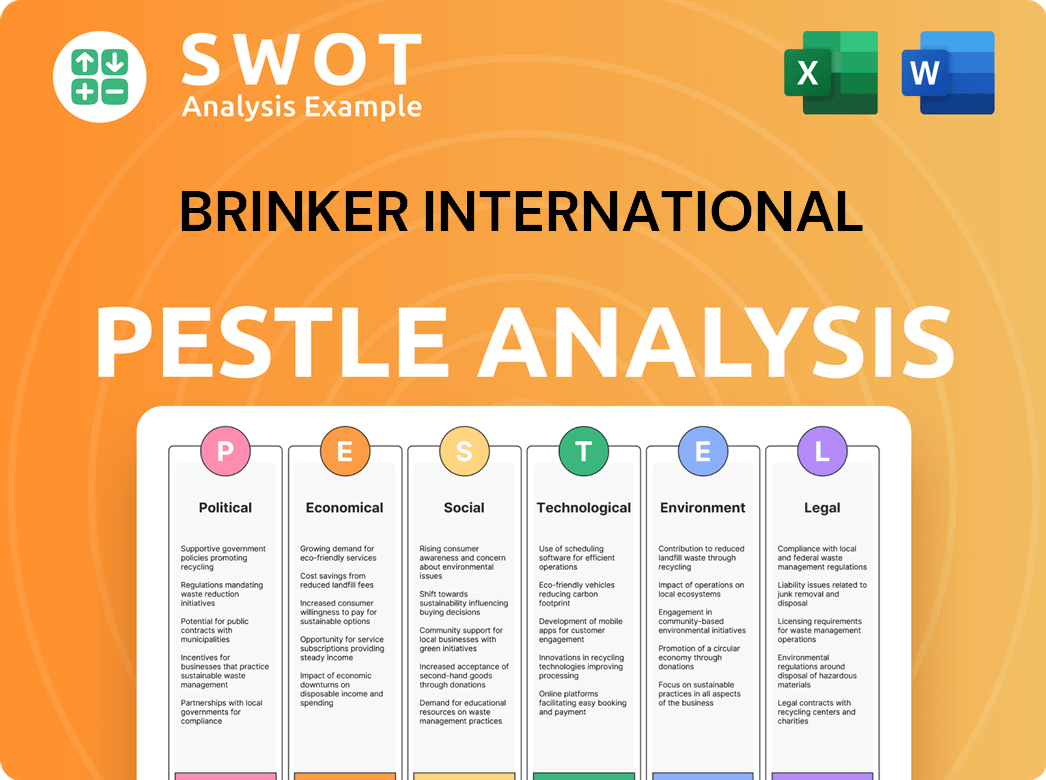
What Is Brinker International’s Growth Forecast?
The financial outlook for Brinker International, a key player in the restaurant industry, is centered on sustainable growth and profitability. The company's strategy includes initiatives to boost revenue, improve profit margins, and effectively manage capital. This approach is designed to deliver consistent value to shareholders. The financial performance of Brinker International is closely watched by investors and analysts alike, given its significant presence in the market.
For fiscal year 2024, the company projects total revenues to be between $4.26 billion and $4.33 billion. This forecast reflects expectations for continued growth in the restaurant sector. Adjusted earnings per diluted share are anticipated to range from $3.00 to $3.30, indicating the company's focus on enhancing profitability. The financial health of Brinker International is crucial for its future prospects.
Brinker International's growth strategy is supported by positive comparable restaurant sales, particularly at Chili's Grill & Bar. The off-premise business, including virtual brands, remains a significant contributor, accounting for approximately 23% of Chili's sales. This highlights the company's ability to adapt to changing consumer preferences and market trends. The company's business strategy is aimed at maintaining a competitive edge.
Total revenues for fiscal year 2024 are expected to be between $4.26 billion and $4.33 billion. This projection is a key indicator of the company's financial health and growth potential. These figures are crucial for assessing the future prospects of Brinker International.
Adjusted earnings per diluted share are projected to be in the range of $3.00 to $3.30. This metric reflects the company's ability to generate profits and is a key factor in investor decisions. The financial performance is a critical aspect of Brinker International's business strategy.
Chili's Grill & Bar saw a 5.6% increase in comparable restaurant sales in the third quarter of fiscal year 2024. This growth demonstrates the brand's continued appeal and market strength. This positive trend is a key element of Brinker International's growth strategy.
Off-premise business accounts for approximately 23% of Chili's sales. This highlights the importance of digital and delivery channels. This segment is a significant contributor to Brinker International's revenue.
Brinker International's financial strategy includes operational efficiencies, supply chain optimization, and disciplined cost management to improve profit margins. The company is actively managing its debt, with a total debt of $1.03 billion as of December 27, 2023. Capital expenditures are projected to be between $150 million and $160 million for fiscal year 2024, focusing on restaurant remodels, technology enhancements, and new unit development. Analysts' revenue estimates for fiscal year 2025 range from $4.29 billion to $4.49 billion. For more detailed insights, you can explore a comprehensive analysis of Brinker International's performance.
Brinker International focuses on operational efficiencies to improve profit margins. This includes streamlining processes and reducing operational costs. These efforts are crucial for enhancing the company's financial performance.
The company actively manages its debt, with a total debt of $1.03 billion as of December 27, 2023. Effective debt management is essential for financial stability. This strategy supports Brinker International's long-term goals.
Capital expenditures are projected to be between $150 million and $160 million for fiscal year 2024. These investments are directed towards restaurant remodels, technology, and new unit development. This indicates a commitment to future growth.
Supply chain optimization is a key component of Brinker's strategy to enhance profitability. This involves improving the efficiency of sourcing and distribution. This approach helps manage costs effectively.
Disciplined cost management is a core element of Brinker's financial strategy. This involves controlling expenses across all areas of the business. Effective cost management supports overall profitability.
Analysts' revenue estimates for fiscal year 2025 range from $4.29 billion to $4.49 billion. These estimates reflect the market's expectations for Brinker International's future performance. These projections are important for investors.
Brinker International Business Model Canvas
- Complete 9-Block Business Model Canvas
- Effortlessly Communicate Your Business Strategy
- Investor-Ready BMC Format
- 100% Editable and Customizable
- Clear and Structured Layout
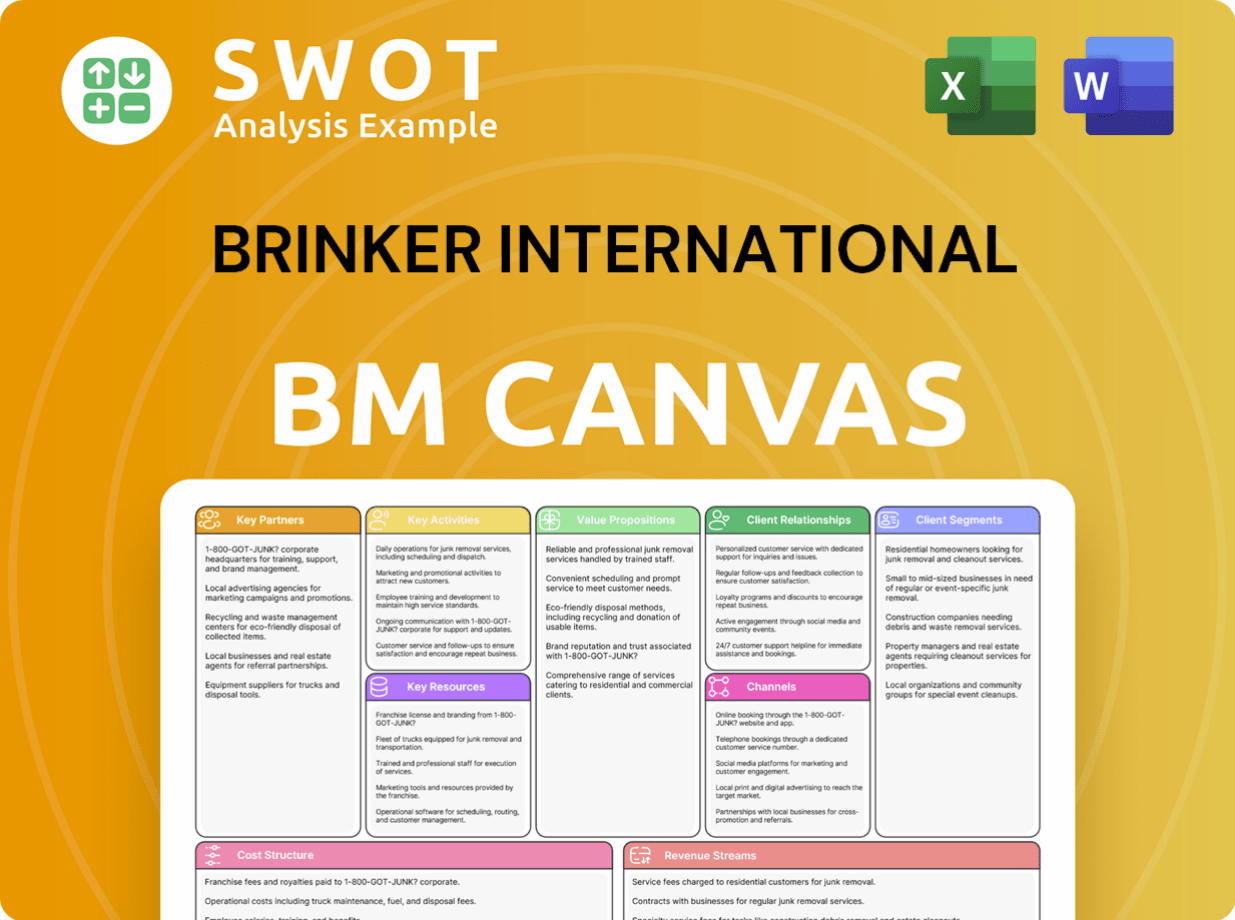
What Risks Could Slow Brinker International’s Growth?
The restaurant industry, where Brinker International operates, is highly competitive, presenting several risks to its growth strategy. The company faces challenges from established players and emerging concepts, which can lead to pricing pressures and increased marketing costs. Regulatory changes, particularly regarding labor laws and food safety, also pose potential obstacles to profitability.
Supply chain vulnerabilities, including rising food costs and labor shortages, present ongoing threats to Brinker International. Technological disruption, such as the shift towards digital ordering and delivery services, requires the company to adapt quickly. Furthermore, internal resource constraints, like attracting and retaining skilled labor, could hinder expansion plans.
To mitigate these risks, Brinker International employs several strategies. The company focuses on supply chain diversification, actively monitors regulatory landscapes, and invests in technology and employee training. Risk management frameworks and scenario planning are also used to anticipate and mitigate potential disruptions, supporting a resilient business model. For example, in 2023, the company reported a $3.85 billion in revenue, reflecting its efforts to navigate these challenges.
The casual dining sector is highly competitive, with numerous established brands and new entrants vying for market share. This competition can lead to pricing pressures and increased marketing expenses, impacting profitability. Successful navigation requires a strong business strategy.
Changes in labor laws, minimum wage increases, and evolving food safety standards can significantly affect operational costs. Compliance with these regulations requires ongoing adjustments and investments. The company must stay informed about regulatory changes.
Rising food costs, labor shortages, and disruptions due to geopolitical events or natural disasters pose ongoing threats. These factors can lead to increased expenses and potential menu price adjustments. The company must manage its supply chain effectively.
The rapid evolution of consumer preferences for digital ordering, delivery services, and new payment methods presents both opportunities and risks. Failure to adapt quickly can lead to a loss of market share. Digital transformation is key.
Maintaining robust cybersecurity measures is crucial to protect customer data and prevent reputational damage. Data breaches can lead to significant financial losses and erode customer trust. Cybersecurity investments are essential.
Challenges in attracting and retaining skilled labor can hinder expansion plans and operational efficiency. A tight job market can increase labor costs and affect service quality. Employee retention strategies are vital.
Brinker International employs several strategies to address these risks. These include supply chain diversification to reduce dependency on single suppliers, and active monitoring of regulatory changes to ensure compliance. The company also invests in technology and employee training to enhance operational efficiency.
The company utilizes risk management frameworks and scenario planning to anticipate and mitigate potential disruptions. This proactive approach helps maintain a resilient business model in the face of evolving challenges. For instance, in 2024, the company allocated $100 million towards technology and infrastructure improvements.
For more insight into the company's core values and mission, consider reading about the Mission, Vision & Core Values of Brinker International.
Brinker International Porter's Five Forces Analysis
- Covers All 5 Competitive Forces in Detail
- Structured for Consultants, Students, and Founders
- 100% Editable in Microsoft Word & Excel
- Instant Digital Download – Use Immediately
- Compatible with Mac & PC – Fully Unlocked
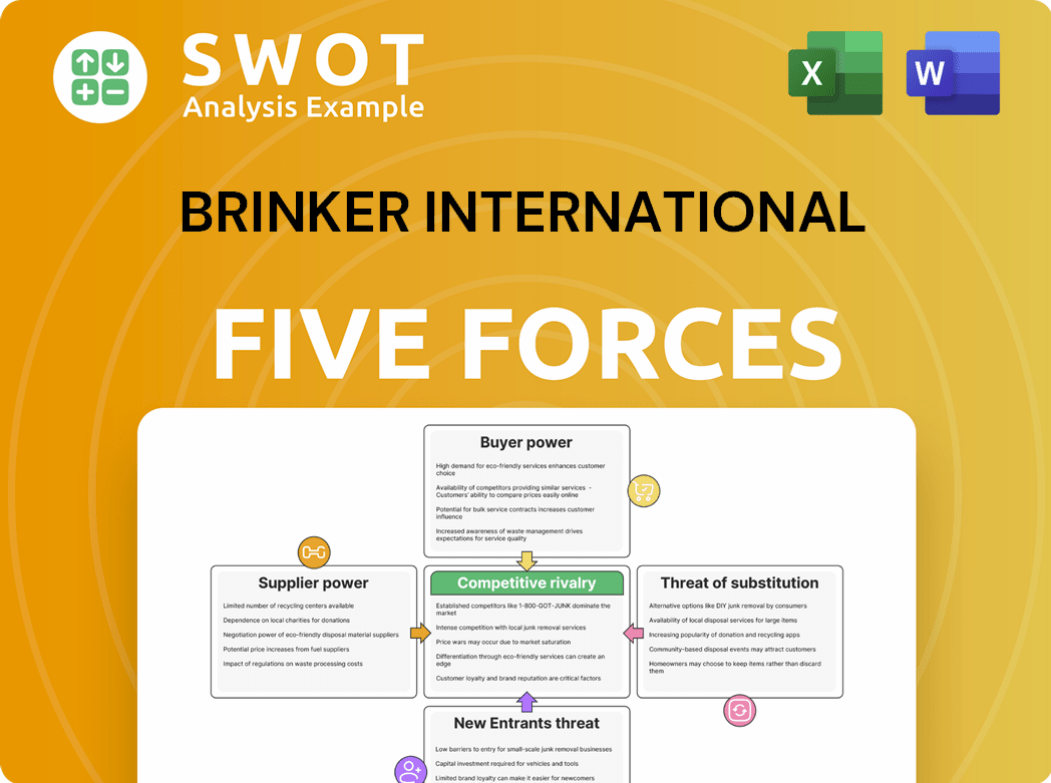
Related Blogs
- What are Mission Vision & Core Values of Brinker International Company?
- What is Competitive Landscape of Brinker International Company?
- How Does Brinker International Company Work?
- What is Sales and Marketing Strategy of Brinker International Company?
- What is Brief History of Brinker International Company?
- Who Owns Brinker International Company?
- What is Customer Demographics and Target Market of Brinker International Company?
Disclaimer
All information, articles, and product details provided on this website are for general informational and educational purposes only. We do not claim any ownership over, nor do we intend to infringe upon, any trademarks, copyrights, logos, brand names, or other intellectual property mentioned or depicted on this site. Such intellectual property remains the property of its respective owners, and any references here are made solely for identification or informational purposes, without implying any affiliation, endorsement, or partnership.
We make no representations or warranties, express or implied, regarding the accuracy, completeness, or suitability of any content or products presented. Nothing on this website should be construed as legal, tax, investment, financial, medical, or other professional advice. In addition, no part of this site—including articles or product references—constitutes a solicitation, recommendation, endorsement, advertisement, or offer to buy or sell any securities, franchises, or other financial instruments, particularly in jurisdictions where such activity would be unlawful.
All content is of a general nature and may not address the specific circumstances of any individual or entity. It is not a substitute for professional advice or services. Any actions you take based on the information provided here are strictly at your own risk. You accept full responsibility for any decisions or outcomes arising from your use of this website and agree to release us from any liability in connection with your use of, or reliance upon, the content or products found herein.